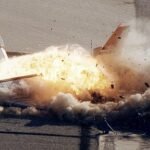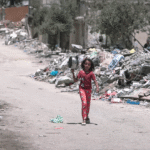A Morning Shattered by Tragedy
Before dawn on May 22, 2025, the quiet streets of San Diego’s Murphy Canyon neighborhood were torn apart by a deafening crash. A small private jet, a Cessna 550, plummeted into the heart of a military housing community, carrying six souls whose lives were cut short in an instant. The plane, swallowed by dense fog, clipped power lines and slammed into homes, igniting fires that turned cars into fireballs and left a trail of devastation. For the residents of this close-knit neighborhood, many of them military families, the morning began with chaos, fear, and an overwhelming sense of loss. In Chicago, a city that knows the pain of sudden tragedy, the echoes of this disaster resonate deeply, reminding us how fragile life can be.
The Human Cost
The six passengers aboard the jet—Dave Shapiro, Emma Huke, Celina Marie Rose Kenyon, Daniel Williams, Dominic Damian, and Kendall Fortner—were more than names in a headline. Dave, 42, was a music agent who co-founded a San Diego-based talent agency, a pilot with a passion for adventure, and a husband whose smile lit up rooms. Emma, 25, was a booking associate with a love for live music, her heart set on artists like Taylor Swift, her spirit shaped by years as a championship dancer. Celina, 36, was a music photographer whose lens captured the vibrancy of concerts and the humanity of her subjects. Daniel, a former drummer for The Devil Wears Prada, brought energy to every stage he played. Dominic, 41, and Kendall, 24, were also part of the music world, their lives intertwined with creativity and community. All six were lost when the plane crashed just seconds before landing at Montgomery-Gibbs Executive Airport, leaving families and colleagues grappling with grief.
On the ground, the toll was no less heartbreaking. Ten homes were damaged, one reduced to a charred shell with a gaping hole where a family’s life once stood. Eight residents suffered minor injuries, five treated for smoke inhalation, and nearly 100 people were evacuated, forced to flee as jet fuel and flames consumed their neighborhood. At Miller Elementary School, a temporary evacuation center, families huddled together, some clutching children, others staring in disbelief at the wreckage of their homes. One resident described the scene as “like a movie,” with debris scattered everywhere—a wing on the street, fragments under power lines, and the overwhelming smell of burnt wood and fuel.
A Community’s Heartbreak
Murphy Canyon is home to military families who serve with courage, yet nothing could prepare them for this. The crash site, just southeast of Interstate 15, was a “gigantic debris field,” as described by Assistant Fire Chief Dan Eddy. Firefighters worked tirelessly to extinguish flames, but the emotional scars will linger. For parents, it was the terror of waking to explosions, grabbing their kids, and running into the fog. For neighbors, it was the shared shock of seeing homes they knew—where barbecues were held, where kids played—reduced to rubble. The community’s strength, forged through years of military resilience, now faces the test of rebuilding not just homes but trust in the safety of their everyday lives.
In Chicago, we understand this kind of collective mourning. From the 2019 Mercy Hospital shooting to the annual toll of gun violence, our city has felt the weight of sudden loss. Like San Diego, Chicago is a place where communities rally—neighbors bringing food, churches opening doors, strangers offering comfort. The San Diego tragedy reminds us how quickly life can change and how deeply we rely on each other when it does.
What Went Wrong?
The Cessna 550 took off from Teterboro, New Jersey, stopped in Wichita, Kansas, for fuel, and was nearing San Diego when it encountered heavy fog. Visibility was down to a quarter-mile, and the airport’s runway lights and weather alert system were out due to a power surge. The pilot, possibly Dave Shapiro himself, asked about weather conditions, his voice calm but concerned. Minutes later, the plane struck power lines two miles from the airport and crashed into a home. No mayday call was made, and the jet lacked a flight data recorder, leaving investigators to piece together the cause. Was it the fog? A mechanical failure? Human error? The National Transportation Safety Board is still searching for answers, but for those left behind, the “why” feels secondary to the pain of loss.
Lessons for Chicago
Chicago, a hub of aviation and home to O’Hare, one of the world’s busiest airports, knows the stakes of air safety. The San Diego crash raises questions about small airports like Montgomery-Gibbs, where control towers close overnight, and systems like runway lights can fail. For Chicago’s leaders, this tragedy is a call to ensure our infrastructure—whether for aviation or public safety—is robust, especially in adverse conditions. It’s also a reminder to cherish our communities, where first responders, like San Diego’s firefighters, risk everything to protect us.
The crash also speaks to the human need for connection. In San Diego, the music community mourns colleagues who brought artists like Sum 41 to life. In Chicago, our own music scene—from jazz clubs to Lollapalooza—knows the passion of people like Dave, Emma, and Celina. Their loss inspires us to hold loved ones closer and support those who create the art that binds us. For insights on building resilient communities in times of crisis, visit CommunityBit’s Guide to Healing Together.
A Path Forward
As San Diego begins to heal, the community is coming together—donating to support displaced families, holding vigils for the six lives lost, and rebuilding what was broken. In Chicago, we can honor their memory by strengthening our own neighborhoods, advocating for safer infrastructure, and fostering empathy across our diverse city. The Murphy Canyon tragedy is a wound, but it’s also a reminder of our shared humanity. We grieve with San Diego, and we carry forward their stories with hope for a safer, stronger future. Stay connected to stories of resilience at Your Website.


















